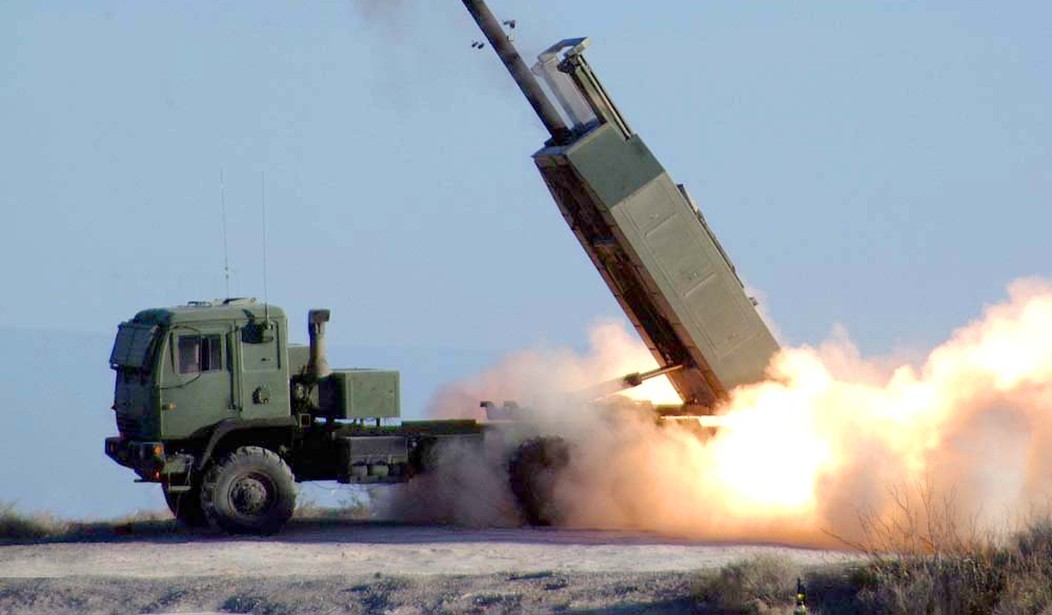The delivery — and effective use — of U.S. rocket systems have complicated things for Russia forces in the Ukraine War.
In my last big Ukraine War update, I explained the age-old saying that “God is on the side of the heavy artillery” and that most of it belongs to Russia.
“With enough big guns behind them,” I wrote then, “Russian troops don’t have to be good, they just have to be there. As a result, they’re suffering losses that would make Western leaders and civilians blanch, but Russians will tolerate.”
Since then, Russian forces, backed by massive and sometimes indiscriminate use of artillery, have taken almost all of the Luhansk region and are making moves to secure the rest of Donetsk.
The good news for Ukraine is that their forces conducted an orderly withdrawal and did not get trapped in the Russian “cauldron.”
But what happens when Ukraine suddenly has the ability to reach out and touch Russian supplies and transportation networks far behind Russia’s artillery?
That’s what we’re finding out right now, courtesy of recently arrived U.S. HIMARS rocket launching vehicles and a metric crapton of rockets.
Ukraine has been smartly using HIMARS to take out Russian ammunition depots and tactical headquarters. Ukraine claims two more depots were destroyed in the Kherson area (where Ukraine is making some slow advances) over the weekend:
Humeniuk stated that these strikes resulted in the “enemy” lacking ammo to attack Ukraine’s positions, saying that they saw “very good results.” Such strikes “not only interrupt the logistic chains of the area, but it also affects the morale of the occupants,” Humeniuk said, according to an English translation.
Russia’s big guns aren’t as effective (cough, cough) when they don’t have any rounds to fire.
Twitter user Def Mon has nicely laid out Russia’s new problem for us laymen.

The rockets used in the HIMARS launcher typically have a range of about 50 miles.
Russia doesn’t actually need “twice the amount of trucks,” because Ukraine doesn’t have perfect intel or an endless supply of rockets. But the point stands that Russian logistics just got a lot more complicated and a lot more dangerous.
Caveat: Def Mon is one of the many Twitter feeds I’ve found useful for Ukraine War data, but I often find his analysis to be too pro-Ukraine to always be useful. The trick is in sorting the data from the spin.
Russia is apparently making preparations for the arrival of the even longer-ranger ATACMS rockets from the American arsenal.
The occupiers relocated a significant number of ships from Sevastopol to Novorossiysk, – speaker of the Odesa OVA Bratchuk pic.twitter.com/cCUp4Usbea
— ТРУХА⚡️English (@TpyxaNews) July 17, 2022
With a range of 190 miles, Ukraine will be able to strike a wider variety of vital logistics nodes, even ones inside Russia proper.
When you have to move your troops and their supplies mostly by rail, and suddenly the railroad junctures and bridges are blowing up, it’s a real headache. To say the least.
But:
There’s no reason to believe that Russia can’t adapt by dispersing ordinance to smaller and less dense ammo depots, or by restarting air sorties (which they seem to have largely abandoned) to hit HIMARS. Knowing the Russian military, the rate of adaptation will be very slow, but it’s not beyond their abilities.
Just making things more difficult for Russia isn’t going to win this for Ukraine. As I’ve written before, if Kyiv wants to end the war on favorable terms, they’re going to have to take back land in places — like Luhansk and Donetsk — where Russia has chosen to concentrate its efforts.
Winter will come hard to Eastern Europe in about four months. When that happens, fighting for both sides will become much more difficult and progress almost impossible to achieve. Russian forces will use the winter to dig in to their conquered territories.
That means Ukraine has about 16 weeks or so to launch and complete a genuine counteroffensive if they’re going to do so at all in the war’s first year.
Ukraine officials have dropped hints about seeing real results in August following the summer offensive but, so far, gains on the ground have been thin.
So we’ll see.
Also for our VIPs: Apple Says Farewell, Jony Ive — You Won’t Be Missed










